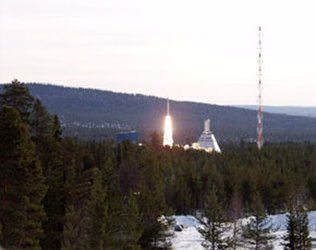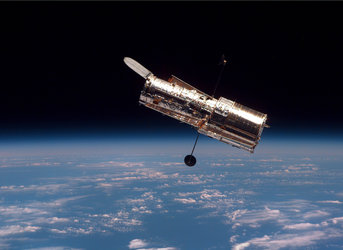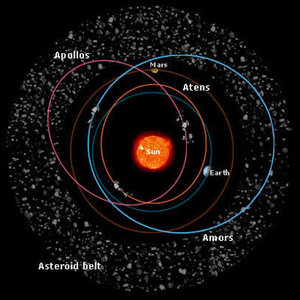2 April
2001: On 2 April 2001, the Sun unleashed a major solar flare, with the event being observed by the ESA/NASA SOHO spacecraft.
It was classified as an X17 flare, the strongest flare since 16 August 1989 when an X20 flare occurred. It was slightly more powerful than the famous 6 March 1989 flare which was related to the disruption of the power grids in Canada. The 2001 event hurled a coronal mass ejection into space, but not towards the Earth.
The flare occurred in the active region 9393 which included a gigantic sunspot group that had drifted across the solar disk in the previous week. This was the largest sunspot group to occur in ten years - 13 times the surface area of Earth at its largest extent. The active region produced a series of solar flares and coronal mass ejections, one of them producing a powerful geomagnetic storm that raged for more than 24 hours, dazzling skywatchers who saw the aurora borealis as far south as Mexico.

1845: On 2 April 1845, French physicist Armand Hippolyte Louis Fizeau and Léon Foucault took the first ever photograph of the Sun.
Fizeau began to research into the new science of photography in 1839, and with Foucault developed 'daguerreotype' photography for astronomical observations by taking the first detailed pictures of the Sun's surface in 1845. They also found, in 1847, that heat rays from the Sun undergo interference and that radiant heat therefore behaves as a wave motion.
In 1849, Fizeau was the first to measure the speed of light on the Earth's surface. He also found that light travels faster in air than in water, which confirmed the wave theory of light, and that the motion of a star affects the position of the lines in its spectrum.
To determine the speed of light, Fizeau sent a beam through the gaps in the teeth of a rapidly rotating cog wheel to a mirror 8 kilometres away. On returning, the beam was brought to the edge of the wheel, the speed being adjusted so that the light was obscured. This meant that light rays which had passed through the gaps were being blocked on their return by the adjacent teeth as they moved into the position of the gaps. The time taken for the teeth to move this distance was equal to the time taken for light travel 16 kilometres to the mirror and back.















 Germany
Germany
 Austria
Austria
 Belgium
Belgium
 Denmark
Denmark
 Spain
Spain
 Estonia
Estonia
 Finland
Finland
 France
France
 Greece
Greece
 Hungary
Hungary
 Ireland
Ireland
 Italy
Italy
 Luxembourg
Luxembourg
 Norway
Norway
 The Netherlands
The Netherlands
 Poland
Poland
 Portugal
Portugal
 Czechia
Czechia
 Romania
Romania
 United Kingdom
United Kingdom
 Slovenia
Slovenia
 Sweden
Sweden
 Switzerland
Switzerland

































